In order for your radio transmitter to be able to talk to your quadcopter, you need to install a receiver in your model. The receiver is then connected to your flight controller.
Most receivers run on 5V power that they get directly from the flight controller. I have seen receivers that run on 3.3 volts, too, so make sure you check the specifications before you power up!
The receivers I’ll be listing in this post all run on 5V, and the way their wiring is set up, they’ll automatically receive power from your flight controller(provided you connect it the right way, of course).
Types of receivers
Most receivers these days are of 4 types: PWM, PPM(or CPPM), SBUS, or DSM/DSMx/Satellite. Depending on the brand of transmitter you have, there are a variety of receivers for you to choose from.
PWM Receivers
PWM receivers are old-school and use a separate wire for each channel they receive. So if your radio is sending six channels to your PWM receiver, you have to hook up 6 wires from your receiver to your flight controller.
The Turnigy/FlySky 9X, and FlySky FS-T6 and FS-I6 radios have compatible receiver modules that are all PWM.
If you are using one of these radios on a miniquad, you’ll have to use their stock receiver and plug in at least four wires(for four flying channels: pitch, roll, yaw, and throttle) into your flight controller.
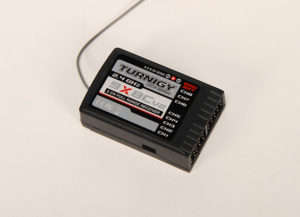
The stock receivers for these radios are very clunky, and will just about fit on a 250-size quadcopter. Good luck trying to fit it on a 210, and don’t even think about trying to fit it on anything smaller!
There’s also this receiver from HobbyKing which is much smaller(compatible with Turnigy 9X radios), and you can actually remove the plastic casing to make it even smaller.
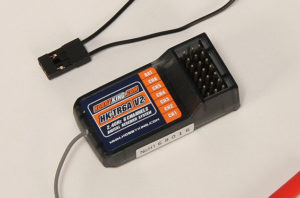
I would not use a PWM receiver on a miniquad as much I could help it. If you do have a Turnigy 9X or FlySky 9X radio, considering upgrading it with a FrSky or OrangeRx module to make it compatible with the smaller serial or ppm receivers.
PPM Receivers
PPM receivers are a step up from PWM receivers as they can send 6-8 channels all from a single wire. As you can imagine, this makes the wiring on your miniquad much cleaner.
Small PPM receivers are usually 3-4 channel receivers that are compatible with PPM. In order to put a receiver such as the FrSky D4R-II in PPM mode, you have to jumper(short out) the signal pins for channels 3 and 4 using the jumper provided in the package. Then you can just plug in a servo wire from channel 1 on your receiver to (usually) the channel 1 input on your flight controller.
Most flight controllers have channel 1 marked as “Channel 1/PPM” so it’s easy to spot.
Make sure you match the polarity on the wire here! Signal, voltage in, and ground on the receiver should connect to the corresponding pads/pins on the flight board!
If you are in the market for a ppm receiver for your miniquad, you can’t go wrong with the FrSky D4R-II.
Get your D4R-II from Banggood
Up until now, I’ve used the D4R-II on most of my builds. However, for my upcoming build, I am using SBUS.
SBUS receivers
SBUS receivers are much, much faster than PPM receivers. The delay in PPM receivers is 60-80 milliseconds, whereas the delay in SBUS receivers is 10-20 milliseconds. Considering you are going 60-80+ km/h with your miniquad, faster response time makes a huge difference!
Another advantage of SBUS over PPM is that on a PPM receiver like the D4R-II, once you jumper channels 3 and 4 and are outputting PPM from your receiver, you can’t use the other channels.
In SBUS, you can use 16 channels from the one SBUS wire, plus 3 more direct PWM channels, too, so you can control things like gimbals and servos, which is pretty handy.
Best of all, the D4R-II receiver and X4R-SB receiver(FrSky’s SBUS receiver) are very similarly priced with a difference of only a few dollars.
One caveat with SBUS is that older flight controllers such as the Naze32 rev5 don’t natively support it – you have to use an inverter to get it to work.
Most new flight controllers natively support it, though, since SBUS is getting more popular for miniquads than PPM.
Get an X4R-SB receiver from Banggood
DSM2/DSMx/Satellite
DSM2/DSMx receivers are serial receivers used by Spektrum. If you have a Spektrum radio, these are the receivers you’ll need. If you don’t have a Spektrum radio and still want to use DSM2/DSMx, you can get the OrangeRx radio from HobbyKing or the OrangeRx module to fit in your Taranis or Turnigy 9X.
DSM is also a fast signal that is transmitted along a single wire. A lot of micro brushed quadcopters(including the popular Tiny Whoop) have a DSM receiver built into the flight controller.
Satellite receivers are DSM2/DSMx receivers with an extra antenna that provides better diversity reception.
If you’re using DSM2/DSMx for a miniquad, you may as well use the LemonRx satellite receivers because they are TINY and weigh almost nothing.
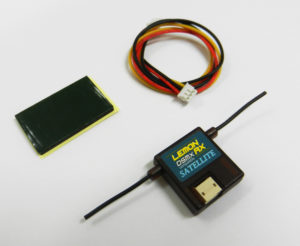
Get your LemonRx receiver from Amazon
Best FrSky Receiver for a quadcopter
So what really is the best FrSky receiver for a quad? We’re beyond PWM and CPPM, so you have to get an SBUS receiver – so you’re still left with quite a few choices:
You have the X4R-SB, which I wrote about above.
Then you have the XSR, which is actually a smarter choice, because it has a smaller profile. The XSR does not have any pins soldered to it, just wires which go into a plastic connector. You would solder the wires directly on to your flight controller. For most miniquad builds, the XSR is an ideal receiver because of it’s smaller profile and support for telemetry.
Then you have the new XM and XM+ receivers. The XM is a single antenna receiver with about half the range of the X4R and XSR, and the XM+ is a full range receiver.
The beauty of these two receivers is that they are half the size of even the XSR – honestly, if you’re just going to race or fly in a park or small area, the XM is fine – but if you don’t mind spending an extra $7 or so, just get the XM+ and have the peace of mind of additional range if necessary!
The only drawback to the XM and XM+ is that there is no telemetry – so to get data like voltage, you’ll need to use an OSD. Most flight controllers have OSD support right out of the box now anyway, so it’s all good. I prefer OSDs anyway, because the constant callouts from my Taranis eventually got a little irritating!
The XM series are so tiny that they’ll fit comfortably even in a small micro build.
Pick up an XM+ receiver from Banggood
Pick up an XSR receiver from Banggood
Further reading
Oscar Liang has put together an excellent guide on the technical differences between radio protocols
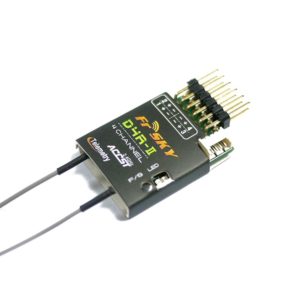
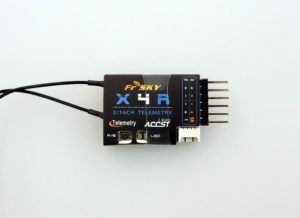
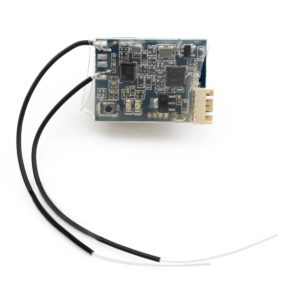
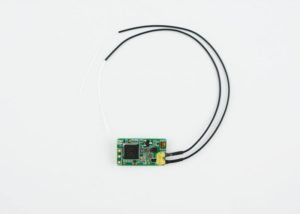
Can flysky FS-T6 binding to Flysky rx2A or Flysky XM receiver? Thx
I am not completely sure, sorry.
Congratulations very good article. Could you tell me do all dsm receivers use 3.3v. Or do they use 5v and their sattilites use 3.3b and what would happen if you put 5v to a 3.3v receiver. Thank you for your time.
Thank you for the kind words. Most DSM receivers use 3.3, if not all. If you try to plug 5v into a 3.3v receiver, you’ll smoke it.
URGENT!!!!
One more week until school gets out and i cant find anything online. My flight controller can only use S.bus but my transmitter and receiver (fs t6 and fs rb6) use PWM. Can i buy a new receiver that uses Sbus and bind that to my transmitter?
I don’t htink you can use a receiver but there are SBUS to PWM converters like this one: https://www.banggood.com/S_BUS-Turn-PWMs_bus-14CH-Multi-functional-Converter-SBUS-to-PWM-p-984155.html?cur_warehouse=CN
Great article!
I was just wondering if my drone (uses 12cm propellers) would still fly properly on 11cm ones??